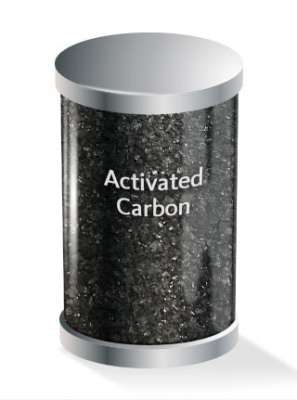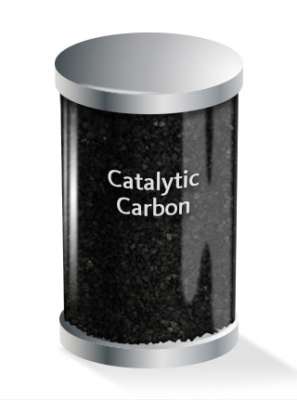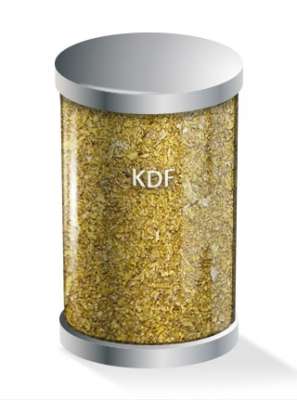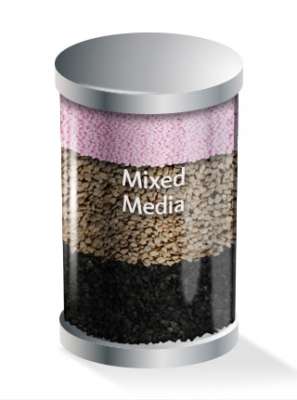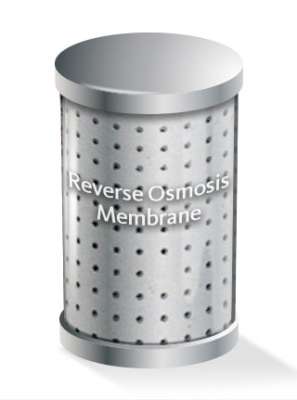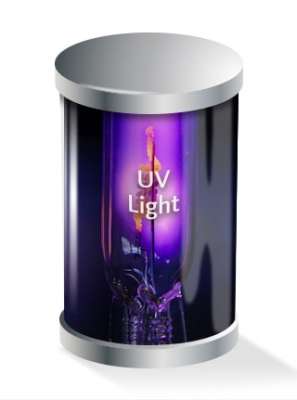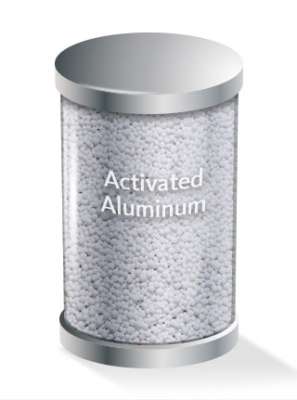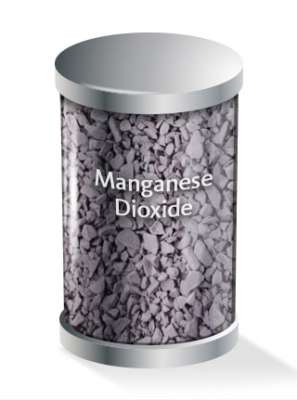Anyone who has considered investing in a water filtration system likely knows about (or has come across the term) “filter media.” And no, we aren’t talking about movies and music.
Filtration media, a powdery substance that varies in thickness, is the unsung hero of water filtration systems. People are more likely to know about filtration system technology than they are to know about the media used in these systems — but that’s a mistake. Anyone who wants to make the most out of their water filter should get the low down on media. Not only is it important to understand how water is filtered, but it’s also important to find a filter (and accompanying filtration media) that is personalized to the toxins specific to their water source.
TREATED, BUT NOT FILTERED
Water utilities will use either chloramines or chlorine to disinfect your water supply. Believe it or not, maintaining residual chlorine or chloramines in the water after it’s left the treatment plant is a regulatory requirement meant to make sure the water remains pathogen-free as it travels to your home. Typically, large utilities will use chloramines as it does not dissipate as quickly and it will produce fewer disinfection byproducts (like THMs and chloroform).
There are a number of approaches to water filtration. The most popular systems include activated carbon, reverse osmosis, mixed media, and UV filters.
Although adding chlorine to treated water has saved countless people over the years from waterborne diseases, it is also one of the reasons many people do not like the taste and odor of their tap water. Chlorine in the water can also have a drying effect on the skin and hair since it’s a strong oxidant. It’s important to keep up the chlorine residual in the water system; however, there are no health benefits of actually consuming it. To decide which filter media product is the most effective at removing the chlorine, check the water quality report provided by the water utility and find out if the utility uses chlorine or chloramine.
NOT ALL FILTERS ARE EQUAL
Understanding how your water is treated will help you understand which media you need to filter your water. And believe us, there are many different approaches to water filtration. The most popular systems include activated carbon, reverse osmosis, mixed media, and UV filters. However, most systems use a combination of these methods for optimal filtration.
Ultimately, the type of system that’s ideal for a home depends on the water quality of that region. Water quality relies heavily on the water source (lake, river, etc), chemicals used at the water treatment facility, and additional information about the city’s water infrastructure. For example, even the pipes in a home can be a contaminant contributor if they contain lead, copper, or other leaching heavy metals. For more information on water quality in a certain region, search for your city’s Water Quality Report. You can also use an easy zip code lookup tool provided by the EWG here.
POPULAR WATER FILTRATION MEDIA
Most filtration systems include a step where water passes through media. Filtration media is the workhorse of these systems, ridding water of a number of impurities. The type of impurities that the filtration system removes depends wholly on the media. While certain media remove a broad range of toxins, others hone in on just a few impurities. Below are seven popular mediums used in drinking water filtration systems.
1. Activated Carbon
The most popular media by far is activated carbon. Created when organic material with high carbon content (like wood, coal, or coconut shells) is heated in such a way that it does not burn, it instead results in char. The char is then treated to create a porous material that binds to certain toxins and impurities thus pulling them out of the water flowing through the system. Again, it’s important to note that not all activated carbon is made with the same base material. While activated carbon is sometimes made from coal, it can also be made from coconut shells, which has a substantially smaller environmental impact.
Activated carbon is found in almost every water pitcher filter, water bottle filter, and most whole home water filtration systems. It removes organic contaminants, chlorination byproducts, lead, copper, and certain pesticides. It also mitigates the unpleasant chlorine taste and odor left behind by the water treatment facility.
2. Catalytic Carbon
Catalytic carbon is a form of activated carbon that is enhanced to increase its catalytic capability. It’s primarily used to rid water of chloramine, which is a chemical that is increasingly used at water treatment facilities to disinfect water. Chloramine has grown popular because of its staying power so that as water moves through the pipes, it doesn’t fall prey to bacteria. But for this same reason, it’s incredibly hard to take chloramine out of the water once it reaches the tap, unlike chlorine. While activated carbon gets rid of a small percentage of chloramine, catalytic carbon removes a majority of chloramine from drinking water.
3. KDF (Kinetic Degradation Fluxion)
This media primarily consists of copper and zinc particles and is used to reduce the levels of water-soluble heavy metals, including chlorine, iron, and hydrogen sulfide. It also manages scale, bacteria, and algae in the water. It’s extremely efficient at removing chlorine, but it does not perform as well as carbon/GAC in removing chloramine. Alternatively, this media is cheaper to operate, lasts a long time, and works better at higher temperatures than carbon so it performs well on warmer water. Use of KDF media upstream of a carbon filter works quite well. The KDF extends the life of the carbon, and the carbon works well reducing the chloramine and THM levels.
4. Mixed-Media
This is somewhat of a catchall. Mixed media can be almost anything and, as the name suggests, is a mix of different mediums to remove more impurities and toxins. These media can include gravel, to filter sediment out of the water, resin to filter tannins out of the water, or catalytic carbon to reduce chloramine levels.
5. Reverse Osmosis Membrane
The reverse osmosis process is an incredibly popular filtration system that removes a large percentage of impurities from water, including some dangerous ones like asbestos and hexavalent chromium. It works by pushing water through a semi-permeable membrane that allows water molecules through but traps water-soluble toxins like heavy metals, organics, bacteria, and pyrogens.
6. Ultra violet light (uv Filtration)
Water is pumped into a chamber which houses an ultraviolet bulb. The ultraviolet rays produced are fine-tuned to a frequency that best attacks microbes. These rays pierce the cell walls, damaging contaminants and their DNA so that they can’t reproduce. This renders dangerous contaminants, such as E.Coli and giardia completely harmless.
The use of UV filtration can be found at all levels of water treatment. Not only is it known to be an effective way to eliminate the dangers of bacteria and viruses, but it also does so without tainting the water with harsh chemicals.
7. Activated Aluminum
Generally found in an ion exchange unit, activated aluminum removes magnesium and calcium, which are two minerals that cause “hard water.” It can also remove fluoride and arsenic if water spends enough contact time with this media type. Depending on the type of activated aluminum, it can filter out radium and barium. Activated aluminum is also referred to as a resin.
8. Manganese Dioxide
There are a few types of media in which the primary ingredient is manganese dioxide. These media reduce iron, manganese, and hydrogen sulfide in water. While iron itself is important for health, it acts as a secondary contaminant in water, causing problems while making tea or coffee and cooking vegetables. Excess iron in drinking water can lead to reddish-brown stains tableware and laundry.
